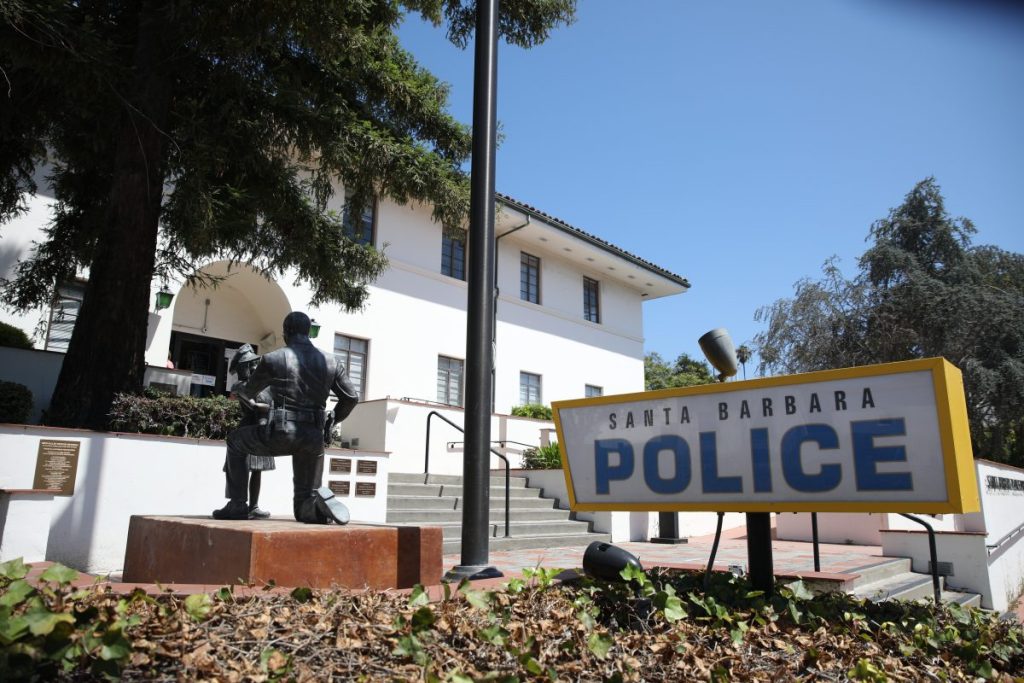Multiple times over the past few decades, the City of Santa Barbara has tinkered with the idea of creating a system of civilian police review. The closest it came was all the way back in 1980, when a big fight broke out in De la Guerra Plaza on the last night of Fiesta. Officers were dispatched, skulls got cracked, and allegations of excessive force were lodged. In the following weeks, the council chambers filled with people arguing for and against a review board. Ultimately, nothing came of it, but the council did ban drinking on the street.
Now, amid national calls for police reform following the death of George Floyd, and at the instigation of regional Black Lives Matter organizers and their supporters, Santa Barbara has officially embarked on the process of forming a community-based system of checks and balances for its police force. This Friday, city attorneys provided the council with a menu of policy options that will be discussed and debated over the coming months. Public feedback can be submitted to SBCityCouncil@SantaBarbaraCA.gov.
The attorneys began their 40-page report with a little bit of history and context around civilian review. Efforts trace back to the 1920s, but the boards that formed then had little power over municipal police agencies and were not effective. They faded from use but garnered renewed interest after the Civil Rights Act of 1964. Today, there are more than 140 review entities around the country, with 33 in California and 16 operating in chartered cities like Santa Barbara.
Get the top stories in your inbox by signing up for our daily newsletter, Indy Today.
“While there are many ways to establish civilian police review, each system seeks to influence and change police practices to help ensure that community law enforcement is constitutional, effective, and responsive to the standards, values, and needs of those served,” the report says. Whatever form the systems take, it explains, they’re meant to increase accountability and deter misconduct.
The first model is “investigation-focused.” It comes with the most amount of authority and the highest cost, and is common to large cities such as Long Beach and San Francisco. In it, paid and trained staff investigate complaints independently of a police department’s internal affairs process. Staff have access to records and posses subpoena power, and they can conduct public outreach as well as make policy recommendations.
The second model is “review-focused” and more advisory in nature. It provides a sort of quality control for internal investigations but lacks the ability to carry out independent inquiries. A reviewer, or body of reviewers, examines issues that range from customer service to the use of deadly force. They may agree or disagree with how the department resolves a problem, and they might suggest other types of resolutions. Smaller cities, including Santa Cruz and Riverside, use this model.
The third is “auditor/monitor-focused” and is also typically advisory. Instead of focusing on individual cases, however, a hired analyst or group of analysts review departmental data and look for broad patterns in the quality of investigations, their findings, and degrees of discipline that are meted out. The strength of this system is its ability to promote “long-term, systemic change in police organizations,” the report states. It’s used in Anaheim, Inglewood, and Sacramento.
“As a practical matter,” the report goes on, “hybrid systems are often the best choice for a city.” For instance, a jurisdiction may implement a single board with multiple functions, such as investigating and auditing. Or, it could create two review entities, one that examines specific allegations of misconduct and another that concentrates on broader policies and practices.
At the moment, the Santa Barbara Police Department has what’s called a “Professional Standards Division” that handles citizen complaints. It’s staffed by a sergeant who is meant to work separately from the command team and report directly to the chief. He or she makes findings as to policy violations, and the captain who oversees the Division hands down the discipline.
Santa Barbara’s Board of Fire and Police Commissioners technically has the power to make recommendations on police operations, but in practice, it has little or no operating budget and is therefore not equipped to offer any kind of meaningful assessment.
Whatever path Santa Barbara takes, given the scope and complexity of the issues at hand, the city ought to conduct “substantial civic engagement” in its decision-making process, the report concludes. “We envision informational public workshops in conjunction with local social justice groups to gather community feedback.” The manner of appointment must also be agreed upon. In other California chartered cities, the ultimate authority lies with either the City Council or the city administrator.
This article was underwritten in part by the Mickey Flacks Journalism Fund for Social Justice, a proud, innovative supporter of local news. To make a contribution go to sbcan.org/journalism_fund.

